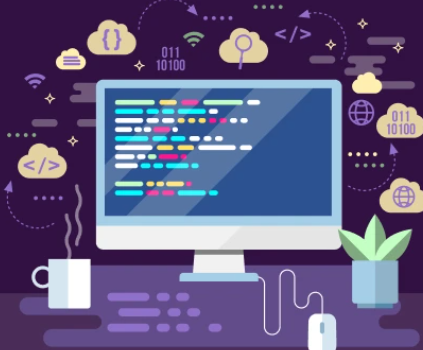
Data science has evolved significantly in recent years, becoming an essential tool for businesses that rely on data to drive decision-making. With the increasing amount of data being generated, data science professionals utilize various analytical tools and statistical techniques to gather, model, and interpret data. Central to these processes are programming languages, which serve as the bridge between humans and computers, enabling data scientists to interact with systems and derive meaningful insights from complex datasets.
This post delves into the role of programming languages in data science, their applications, and how they contribute to solving real-world problems.
Overview of Data Science Programming Languages
In the realm of data science, programming languages are used to perform essential tasks such as:
- Data Storage: Programming languages like SQL are used to create, manage, and retrieve data from databases.
- Data Modeling: Languages such as Python allow data scientists to build predictive models that simulate real-world scenarios.
- Data Visualization: Tools and libraries within programming languages help represent data visually, making it easier to communicate findings.
Different programming languages cater to various aspects of data science, from statistical computing to machine learning and data analysis. Here’s a closer look at some of the most commonly used languages in data science.
Popular Programming Languages in Data Science
Python for Data Science
Python has emerged as the go-to language for data science, with an impressive 90% of data scientists using it for their work. Its simplicity and ease of use make it an ideal choice for both beginners and seasoned professionals. Python’s rich ecosystem of libraries, such as NumPy, Matplotlib, and Pandas, offers pre-built functions that allow data scientists to perform data manipulation, visualization, and complex analyses with ease. Python’s flexibility makes it suitable for a wide range of data science tasks, from statistical modeling to machine learning.
R for Data Science
R is another powerful language widely used in data science, especially for statistical analysis and data visualization. Around 38% of data scientists use R, which is well-known for its extensive collection of packages—currently over 14,000. These packages support a wide range of functions, from data manipulation to advanced statistical modeling. R is particularly popular among statisticians and is often used in academic research and complex data analysis. Additionally, R integrates well with other languages like Python and Java, enhancing its utility in collaborative data science projects.
SQL for Data Science
Structured Query Language (SQL) is fundamental to data science, with around 53% of professionals using it regularly. SQL is used for managing and querying relational databases, allowing data scientists to extract, manipulate, and analyze large datasets. SQL is especially effective for handling structured data, and it remains essential for tasks like data cleaning, aggregation, and transformation. Data scientists rely on SQL to access and manage the data stored in databases, which forms the foundation for further analysis.
Java for Data Science
Java is a versatile programming language that is also widely used in data science. Known for its efficiency and scalability, Java can handle large datasets and is often used to build applications that process big data. Its ability to run on the Java Virtual Machine (JVM) enables cross-platform compatibility, making it a valuable tool for creating applications that work across different operating systems. Java is also used to write machine learning models and AI algorithms, which can process and analyze massive datasets more efficiently.
Scala for Data Science
Scala is a hybrid programming language that blends object-oriented and functional programming principles. It is gaining traction in the data science community, particularly for projects that involve handling large-scale data. Scala is compatible with Java, making it an excellent choice for data scientists who need to process big data using tools like Apache Spark. Scala is known for its high performance, allowing data scientists to run multiple operations concurrently and work with complex data structures.
Julia for Data Science
Julia is a newer programming language that is rapidly gaining popularity in the data science field due to its speed and efficiency. Julia is designed for high-performance numerical and scientific computing, making it ideal for large-scale data modeling and simulations. Julia can integrate seamlessly with other languages like Python and C, which allows data scientists to leverage existing code while benefiting from Julia’s speed. It is particularly useful in industries like finance, where rapid data processing is essential.
Choosing the Right Programming Language for Data Science
When selecting a programming language for data science, professionals must consider several factors:
- Industry standards: Some industries may prefer specific languages for certain types of analysis or modeling.
- Project requirements: Depending on the complexity and scope of the project, some languages may be more suitable than others.
- Ease of use: Languages with simple syntax, like Python, may be more accessible for beginners.
- Time constraints: Some languages offer faster processing speeds, which can be critical when working with large datasets.
- Community support: Languages with active communities, such as Python and R, provide more resources, tutorials, and libraries, which can speed up the learning process.
The Power of Hybrid Approaches
In practice, data scientists often combine multiple programming languages to optimize their workflows. For example, Python and R can be integrated to leverage R’s statistical analysis capabilities and Python’s machine learning libraries. This hybrid approach allows data scientists to select the best language for each task, maximizing efficiency and performance. The flexibility to combine languages ensures that data scientists can work with a variety of tools that cater to different aspects of a project.
Best Practices for Efficient Data Science Programming
To enhance efficiency and productivity, data scientists follow several best practices:
- Use data science libraries: Libraries like Scikit-learn, TensorFlow, and PyTorch simplify coding tasks by providing pre-written functions for machine learning, data analysis, and neural network development.
- Master data science software: Tools such as Jupyter Notebook, Microsoft Power BI, and Apache Spark can streamline workflows and improve collaboration among team members.
- Stay updated: Data science is a rapidly evolving field, so staying current with the latest tools, libraries, and techniques is essential for long-term success.
Conclusion
Programming languages are the backbone of data science, enabling professionals to perform a wide range of tasks from data collection and modeling to machine learning and data visualization. Whether you’re a seasoned data scientist or just starting out, understanding the strengths and applications of different programming languages is crucial. By choosing the right language for each task, you can optimize your workflow, enhance your skills, and make a meaningful impact in the world of data science.












